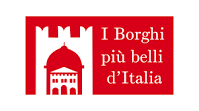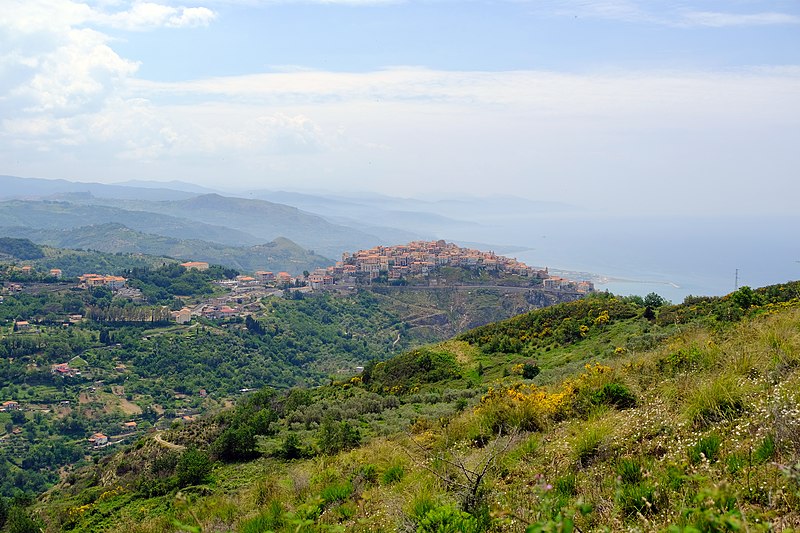
San Marco d'Alunzio

Il borgo è iscritto all’Associazione “I Borghi più Belli d’Italia”.
San Marco d’Alunzio dista 87 km da Messina e 135 da Palermo. È situato sulla sommità del Monte Castro a 540 metri s.l.m., da cui si domina un lungo tratto della costa tirrenica con in fondo le isole Eolie e alle spalle la catena montuosa dei Nebrodi.
L’antica (Alòntion) greca divenne Haluntium con i Romani, mentre i Bizantini la chiamarono Demenna e i Normanni San Marco; nel 1867 prese il definitivo nome di San Marco d’Alunzio. Dell'antica città greca rimangono, nella parte bassa dell'abitato, alcune strutture del Tempio di Ercole.
Di impianto bizantino sono la chiesa di San Teodoro, a croce greca, con all'interno decorazioni a stucchi del XVIII secolo, e l'Annunziata, di impianto paleo-cristiano. Dell'originaria struttura normanna della chiesa del Santissimo Salvatore, del XII secolo, sono rimaste all'interno le colonne, con capitelli in pietra decorati con motivi bizantini a palma. La struttura è a croce greca e decorata con disegni geometrici.
Sono pure interessanti la Chiesa madre edificate in pietra e marmo locale, e numerose chiese con preziosi dipinti, stucchi, affreschi e tele, opera di maestranze locali, la chiesa di Sant'Antonio, chiesa di Sant'Agostino, chiesa di San Basilio, chiesa di Santa Maria dei Poveri, chiesa di San Giuseppe, chiesa di San Giovanni, convento dei Padri Cappuccini, monastero delle Benedettine.
San Marco ospita il Museo della Cultura e delle Arti Figurative Bizantine e Normanne, il Museo di Arte Sacra e di Argenti e un Museo che espone collezioni di pietre minerali e reperti fossili provenienti dal Brasile.
San Marco d’Alunzio offre anche un turismo di tipo naturalistico-paesaggistico con percorsi trekking e un parco attrezzato per l’attività sportiva. Percorrendo sentieri tra i monti Nebrodi si possono godere paesaggi ancora incontaminati, come le Rocche del Crasto e ammirare i voli di aquile e grifoni.
Il borgo offre vari prodotti enogastronomici, un fiorente artigianato della lavorazione del ferro, del legno, della tessitura con telai a mano.San Marco d’Alunzio è un centro cittadino molto produttivo, teatro di eventi importanti, nei quali le tradizioni e la storia si fondono e si adattano alla realtà contemporanea.
(English)
San Marco d'Alunzio
The village is enrolled in the Association "I Borghi più Belli d'Italia".
San Marco d’Alunzio is 87 km. from Messina and 135 km. from Palermo. It is located on the top of Castro mount at 540 meters above sea level, which overlooks a long stretch of the Tyrrhenian coast with the Aeolian islands at the bottom and behind the Nebrodi mountain range.
The ancient Greek (Alòntion) became Haluntium with the Romans, while the Byzantines called it Demenna and the Normans San Marco; in 1867 it took the definitive name of San Marco d’Alunzio. Some structures of the Temple of Hercules remain from the ancient Greek city in the lower part of the town.
Byzantine are the church of “San Teodoro”, with a Greek cross, with 18th century stucco decorations inside, and the “Annunziata”, with a paleo-Christian structure.
Of the original Norman structure of the 12th century church of the “Santissimo Salvatore”, the columns remain, with stone capitals decorated with Byzantine palm motifs. The structure is a Greek cross and decorated with geometric designs.
Also interesting are the Mother Church built in local stone and marble, and numerous churches with precious paintings, stuccos, frescoes and paintings, the work of local workers, the church of “Sant'Antonio”, church of “Sant'Agostino”, church of “San Basilio”, church of “Santa Maria dei Poveri”, church of “San Giuseppe”, church of “San Giovanni”, convent of the Capuchin Fathers, Benedictine monastery. San Marco houses the Museum of Byzantine and Norman Culture and Figurative Arts, the Museum of Sacred Art and Silver and a Museum which exhibits collections of mineral stones and fossil finds from Brazil.
San Marco d’Alunzio also offers naturalistic-landscape tourism with trekking routes and a park equipped for sports. Walking along paths in the Nebrodi mountains you can enjoy unspoiled landscapes, such as the “Rocche del Crasto” and admire the flights of eagles and griffins.
The village offers various food and wine products, a thriving craft of iron, wood, weaving with hand looms. San Marco d'Alunzio is a very productive city center, the scene of important events, in which traditions and history they blend and adapt to contemporary reality.